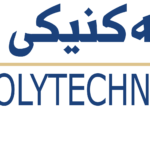- Chrakhan Salh Rahman
- [email protected]
- 0750 131 3940
- All Thesis PDF
-
Colorectal cancer (CRC) is the third most diagnosed tumor worldwide, with a very high mortality rate. The treatment strategies, such as surgery, chemotherapy, or radiotherapy, are not effective enough and show several limitations. Therefore, emerging strategies, such as nanomedicine offers a very powerful tools for cancer treatment. Recently, the combination of nanoparticle antitumor effect with a triggering external stimulation was formulated to boost up the cytotoxic activity. In the present study, the synergistic action of Zinc oxide nanoparticles and Diode laser was assessed in the treatment of Colorectal cancer cell line (Caco2) in vitro.
Different concentrations of ZnO2-NP (0.5, 1, 5, 10, 20, 40, 75, 100, 200, 1000) µg/ml were used for cytotoxic action. In addition, targeted laser power of (5 j/cm2). The combination of ZnO2-NP and Diode laser for the cell was evaded properly. IC50 for CaCo2 was 20 µg/ml. The cytotoxic action was measured via MTT Assay for (24,48 and 72 hrs), while Flowcytometery (Propidium Iodide, Annexin VAssay) was applied for detection of apoptosis, while, analysis of cell cycle arrest was measured by flowcytometry. Moreover, the relative expression level of (P53, Bax, and Bcl2) was measured using quantitative real-time PCR (qPCR). Reactive Oxygen Species-level was determined by dichlorofluorescein diacetate (DCFDA) Assay method.
The percentage of cells that decreased in the G2 phase of the cell cycle relative to the S and G1 phases was significantly different when laser and zinc nanoparticles were combined (p-value<0.05). Significantly substantial variation in the use of a diode laser and zinc nanoparticles to stop the spread of cancer by boosting the expression of the p53 gene (p-value<0000). Bax, a key pro-apoptotic component of the B-cell lymphoma 2, is an essential gateway to mitochondrial dysfunction and was significantly expressed in the study (p-value<0.05) after cell treatment. Utilizing the laser and zinc nanoparticles together did not reveal any substantial differences in the Bcl2 gene (p-value>0.05). Results of different techniques used in the study supported that combination therapy of ZnO2 and Diode laser is cytotoxic to Colorectal cancer in vitro and there is a possibility of developing an effective therapeutic agent against Colorectal cancer. The finding of cytotoxicity is a significant difference in combination therapy on the number of cells experiencing early apoptosis compared to live, late apoptosis, and necrosis (p-value<0.05). Highly noticed modifications and significant differences have been reported when the proportion of cell lines in DCFH- compared to DCFH+ has been reduced using laser and zinc nanoparticles alone or together (p-value<0.05), the percent of cells in the control remains at high rates and decreased in all treated cases with different ratios.
This study demonstrated that the combination of zinc oxide nanoparticles and diode laser therapy on colorectal cancer cells (Caco-2) in vitro, showed a synergistic anticancer impact.
- Erbil Technical Health College
- Medical Laboratory Technique
- Molecular biology


